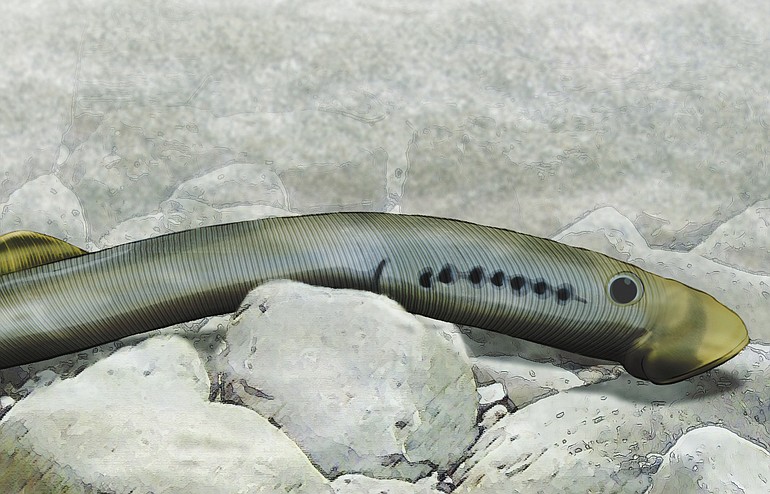After arriving from the ocean, lamprey spend a winter in fresh water.
Building their nests in gravel, they swish out a depression and then use their suction mouths to move stones into position as a small wall against the current.
Their nest prepared, the lamprey begin their rather bizarre mating ritual. The male grasps the female’s head with his suction mouth, and the pair twirl around one another in a passionate embrace, expelling the milt and pepper-size eggs into the nest. The adults then die, their bodies providing nutrients for the river’s food web. Two to three weeks later, the eggs hatch.
These 5- to 10-millimeter hatchlings, or ammocoetes, drift blindly in the current. The ones lucky enough to survive wriggle down into sediment rich in organic material and algae. They stay in the river bottom for three to seven years.
No one is sure what the cues are, but the young lamprey eventually emerge from their muddy cocoon with a yearning for the ocean. The ones that make it past the dive-bombing birds, salmon and other predators live for the next one to four years in the ocean. Once prey, they become predators.



